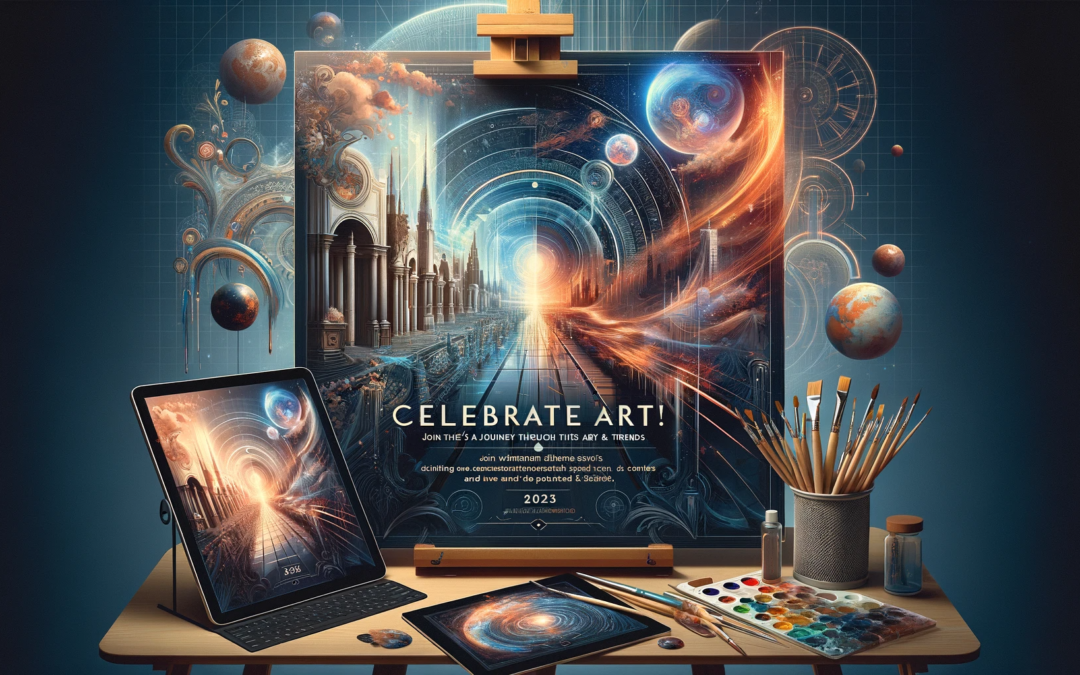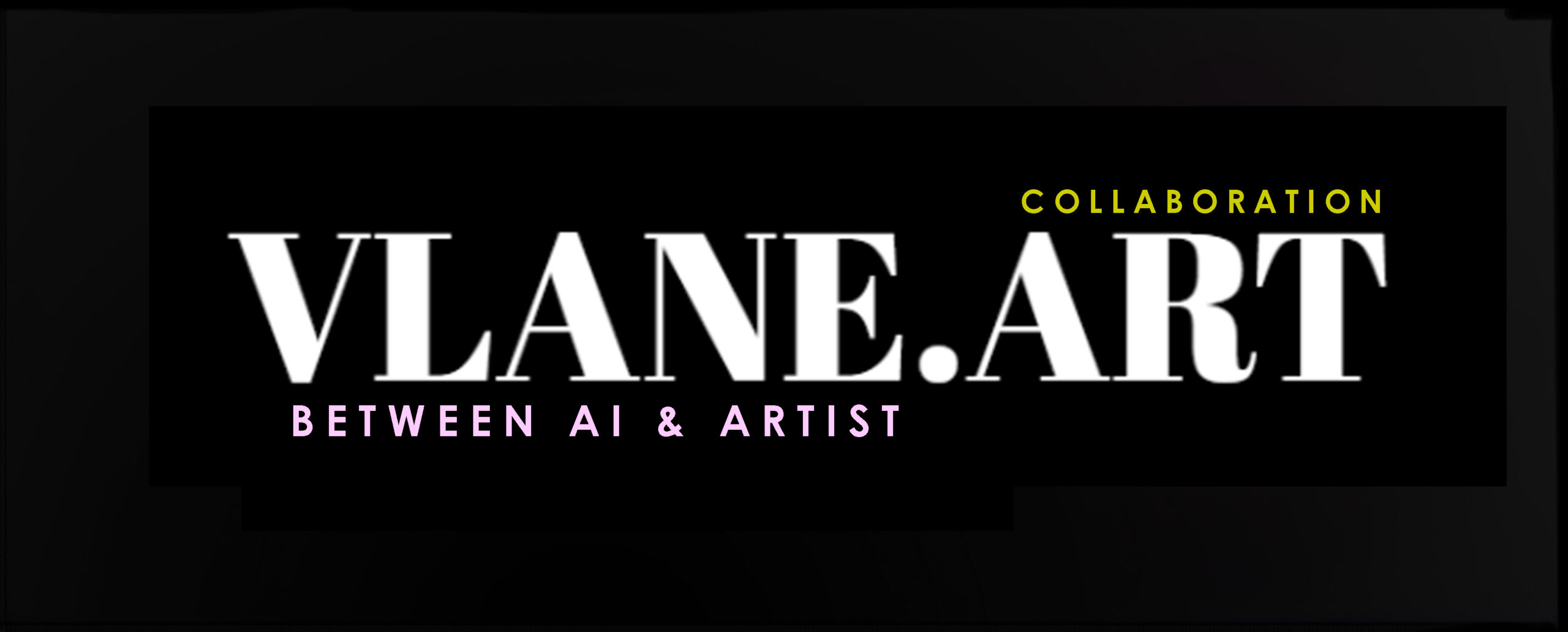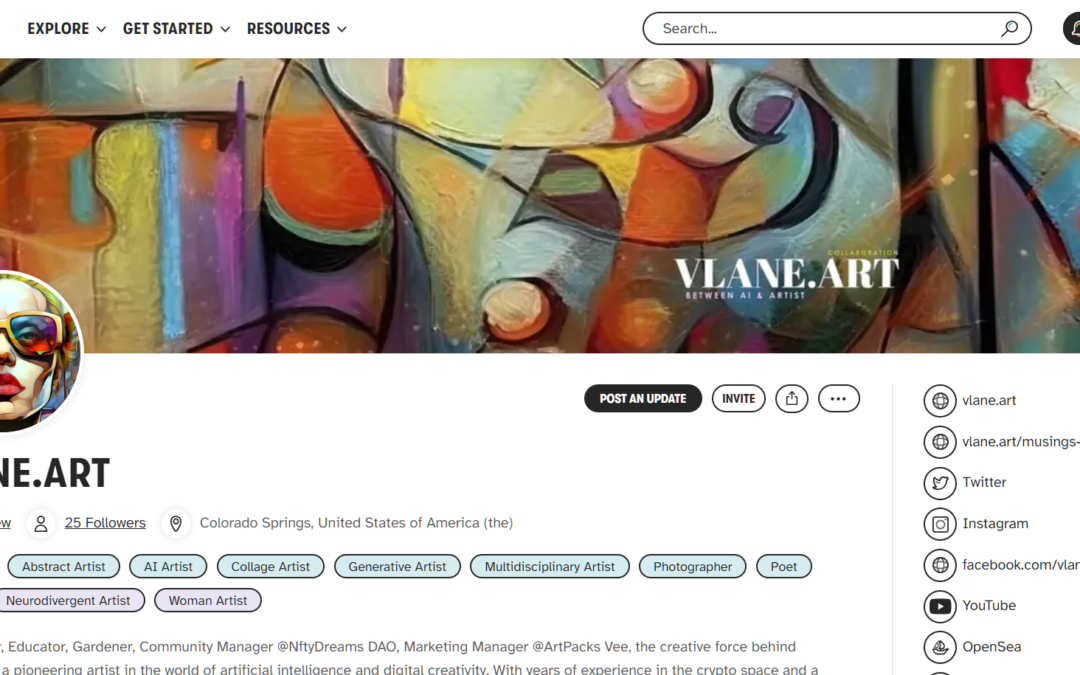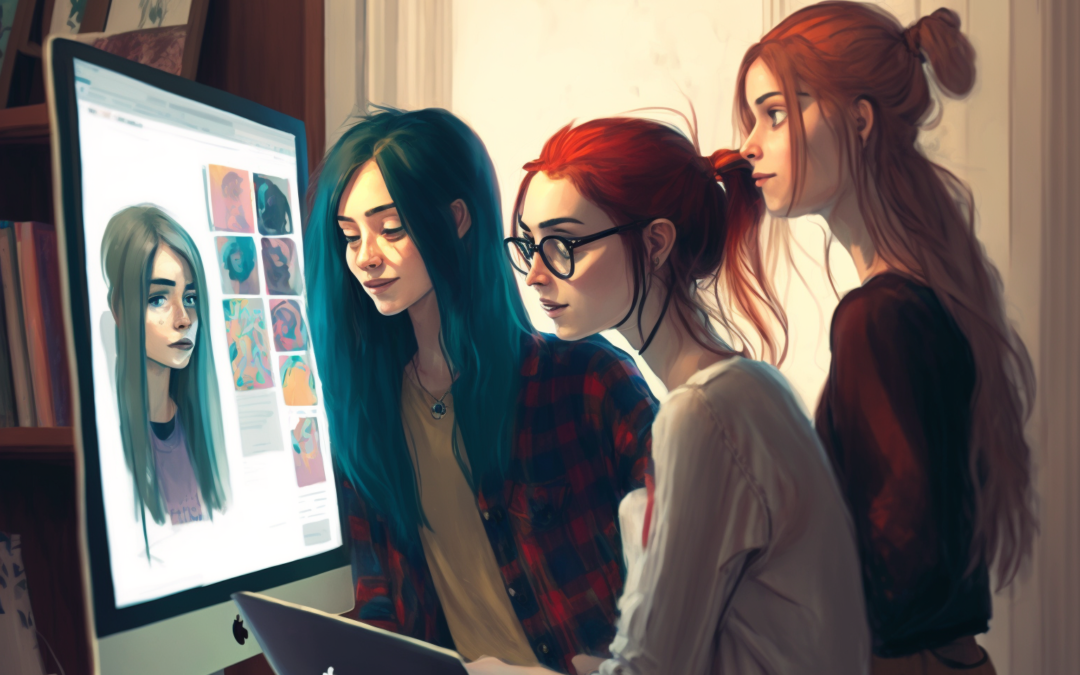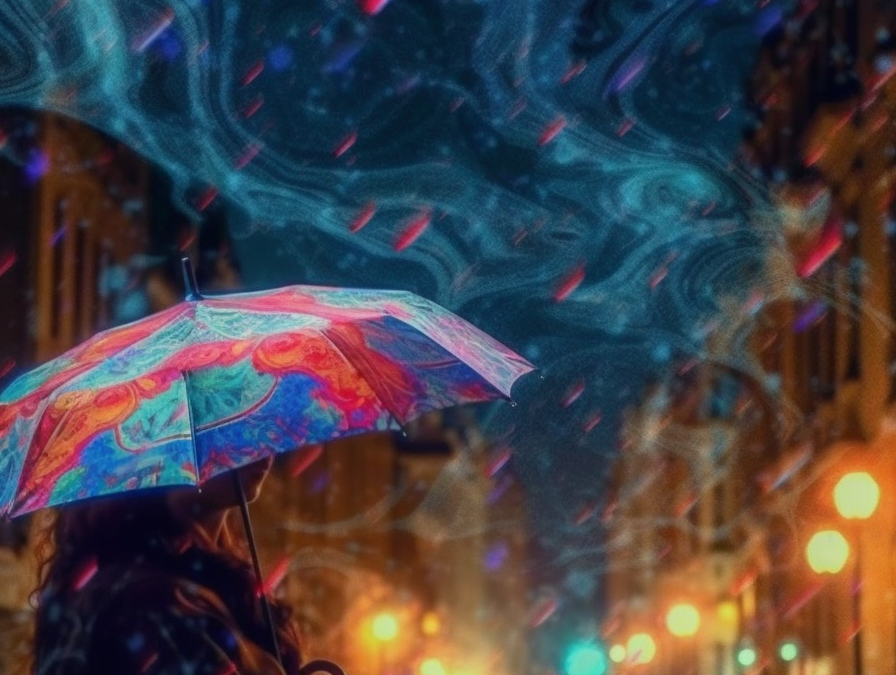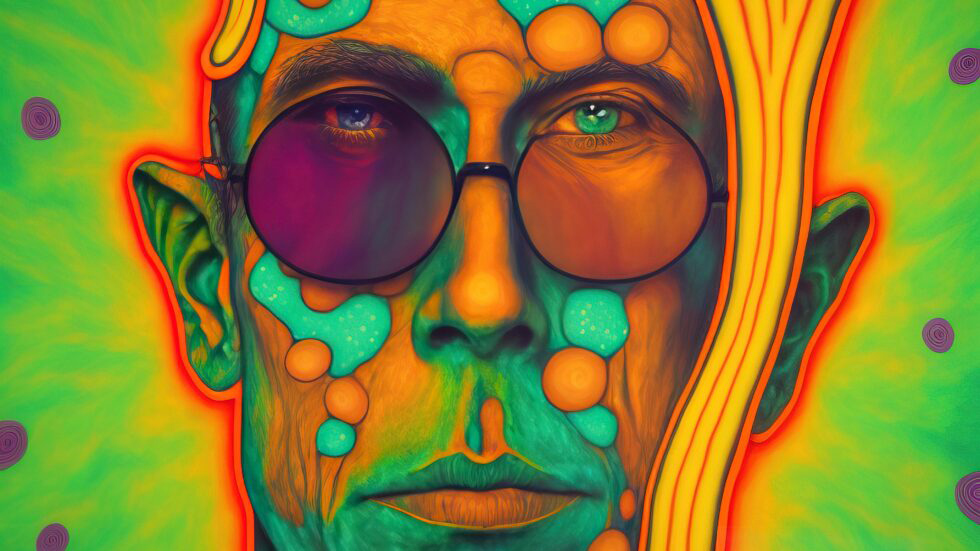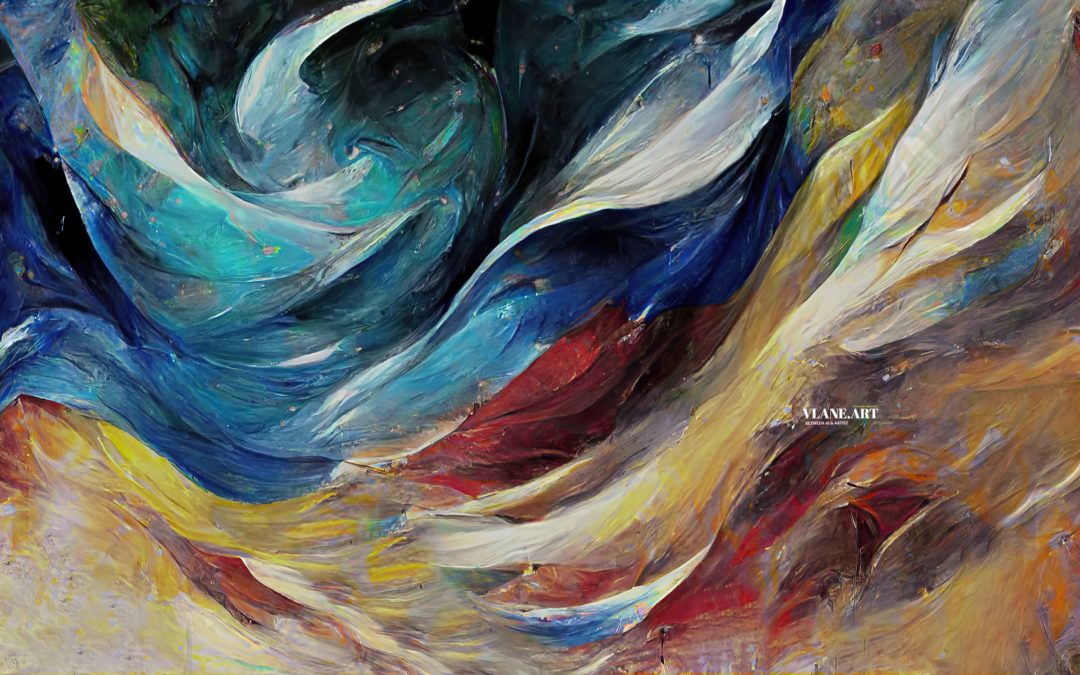Introduction
Artificial Intelligence (AI) is making significant strides and currently has the potential to revolutionize the art world by enabling the creation of art that is not only unique and diverse but also highly personalized and interactive. The growing significance of AI art in the field of art and technology is driven by its ability to push the boundaries of creativity and provide new ways for artists and audiences to engage with art. This article’s goal is to provide an understanding of the process of text-to-image diffusion models, a type of AI art, and its role in creating AI-generated art.
Brief Background
The history of AI art can be traced back to the 1950s when artists and computer scientists began experimenting with using computer algorithms to create art. However, it wasn’t until the late 20th century, with the advent of more powerful computers and sophisticated algorithms, that AI-generated art began to gain traction. Since then, it has evolved from simple geometric patterns to more complex and nuanced forms of art, such as images, videos, and even music. (See HAROLD COHEN AND AARON—A 40-YEAR COLLABORATION by By Chris Garcia | August 23, 2016)
AI art has various applications, including in digital art, advertising, and video games. It also has the potential to be used in areas such as architecture, fashion, and product design. In addition, AI-generated art can be used in art therapy and education, providing new ways for people to engage with and understand art.
Text-to-image diffusion models are a specific type of AI art that creates images based on a text description. The text description acts as a prompt, which the algorithm then uses to generate an image. This process is based on the idea of “diffusion,” which means the algorithm looks at similar text prompts and images having been generated before, and uses this information to create a new image. This method allows for the creation of highly personalized and diverse images, as the algorithm can generate a wide range of images based on the same text prompt.
The current state of AI art is rapidly advancing, with new techniques and algorithms being developed all the time. The increasing accessibility and affordability of AI technology are also making it possible for more and more artists and creators to experiment with AI art. The impact of AI art on the art industry is significant, with many artists and galleries now showcasing AI art, and art buyers and collectors showing interest in it. At the same time, the field is still relatively new, and the question of authorship and originality in AI art is an ongoing debate in the art world.
NOTE: See the lawsuit Class Action Filed Against Stability AI, Mid journey, and DeviantArt for DMCA Violations, Right of Publicity Violations, Unlawful Competition, Breach of TOS)
Methods
The Process of Text-to-Image Diffusion Models
A text prompt is a description of the image the model is supposed to generate. The text prompt is input into the model, which then generates an image based on the text prompt. The process of generating the image can be broken down into several key steps:
- Text encoding: The text prompt is first converted into a numerical representation, known as an embedding, that can be processed by the model. This is typically done using techniques such as natural language processing (NLP) and word embeddings.
- Image generation: Once the text prompt has been encoded, the model uses this information to generate an image. This is typically done using a deep learning algorithm such as a generative adversarial network (GAN) or a variational autoencoder (VAE). These algorithms are trained on a large dataset of images and their corresponding text descriptions and learn to generate new images based on the patterns it observes in the data.
- Image decoding: The generated image is then decoded back into a more human-readable form, such as a JPEG or PNG image.
- Image Refining: After the image is generated, the model can use a technique called image refinement to improve the quality of the generated image. This is done by training a separate model on a dataset of real images and using this model to improve the generated image by making it more similar to real images.
- Post-processing: The final step is to post-process the generated image to make it more visually pleasing and realistic. This can be done by techniques such as color correction, cropping, and resizing.
It’s important to note the techniques and algorithms used in text-to-image diffusion models can vary depending on specific applications and the quality of the data sets available. The advances in the deep learning field such as GPT-3 and Transformer architectures are also being used in text-to-image diffusion models to further improve the quality and diversity of the generated images.
NOTE: What datasets does Stable Diffusion use? The core dataset used to train Stable Diffusion is Laion-5B. This is an open-source dataset that provides billions of image/text pairs from the internet. https://machinelearningmastery.com/the-transformer-model/ The other MUST READ article from Google Research, Brain Team about their new technology behind Imagin a text-to-image data model https://imagen.research.google/
The Process of Developing Text-to-Image Diffusion Models
The process involves several key steps, including data collection, data preprocessing, model training, and model testing.
- Data collection is the first step in developing a text-to-image diffusion model. This typically involves gathering a large dataset of images and their corresponding text descriptions. These data sets are usually built by scraping the internet for images and their associated captions or by using publicly available data sets. It is important that the data sets are diverse and representative of the target domain, otherwise, the model will not generalize well.
- Data preprocessing is the next step in the process. This involves cleaning and formatting the data to make it suitable for training the model. This includes tasks such as resizing images, converting images to grayscale, and tokenizing text descriptions.
- Model training is the process of training the algorithm to recognize patterns in the data set and generate new images based on text prompts. This is typically done using a deep learning algorithm such as a generative adversarial network (GAN) or a variational autoencoder (VAE). The model is trained on the preprocessed data set, and it learns to generate new images based on the patterns it observes in the data.
- Model testing is the final step in the process. This involves evaluating the model’s performance by testing it on new data sets. The model’s ability to generate new images based on text prompts is evaluated, and any errors or inaccuracies are identified. Based on the results of the testing, the model may need to be fine-tuned or retrained to improve its performance.
It’s important to note the process of developing text-to-image diffusion models is an iterative process usually taking experimentation and fine-tuning to achieve good performance. Also, the quality of the data sets and their size play a huge role in the model’s ability to generalize and perform well on unseen data.
NOTE: Please read How I trained 10TB for Stable Diffusion on SageMaker and check out the Laion-5B the data set Stable Diffusion was trained on. Note, they do have opt-out directives for websites. Please look at Amazon Web Services because their cloud computing capabilities will play a large role in the future lives of all Americans.
Limitations and Challenges of Text-to-image Diffusion Models
While text-to-image diffusion models have the potential to create highly personalized and diverse AI art, there are also several limitations and challenges that need to be addressed. Some of the main limitations and challenges include:
- Limited understanding of natural language: Text-to-image diffusion models rely on the ability to understand natural language, which is still a difficult task for AI. The model may not be able to fully understand the meaning of a text prompt and may generate an image that does not match the intended description.
- Lack of diversity: Text-to-image diffusion models are limited by the data sets they are trained on. If the data set is not diverse enough, the model may not be able to generate a wide range of images and may produce images that are not representative of the target domain.
- Quality of the generated images: The quality of the generated images can vary depending on the specific application and the data sets used to train the model.
- Difficulty in evaluating the quality of the generated images: Evaluating the quality of AI art can be challenging, as it requires a different set of criteria than evaluating human-made art. There is currently a lack of consensus on how to evaluate the quality of AI art, which makes it difficult to compare different models and measure their performance.
- Ethical and legal issues: The question of authorship and originality in AI art is an ongoing debate in the art world. There are also concerns about the potential for AI-generated art to be used for malicious purposes, such as creating deep fake images.
Overall, text-to-image diffusion models have the potential to create highly personalized and diverse AI art, but there are still significant limitations and challenges to be addressed. These challenges are not only technical but also ethical and legal, which need to be considered.
NOTE: The quality of the images produced through Mid journey and other similar tools is improving because they are collecting DATA from the users (HUMANS) using the tools and contributing their images to the dataset too. Recent lawsuit Class Action Filed Against Stability AI, Mid journey, and DeviantArt for DMCA Violations, Right of Publicity Violations, Unlawful Competition, Breach of TOS)
AI Art Results
There have been many examples of AI art created using text-to-image diffusion models. Some notable examples include:
- DALL-E by OpenAI is a text-to-image model that can generate images from text prompts such as “a two-story pink house with a white fence and a red door.”
- BigGAN by NVIDIA is a model that can generate high-resolution images from text prompts. BigGAN has been used to generate images of animals, landscapes, and even abstract art.
- Generative Query Network (GQN) by Google DeepMind, can generate images of scenes based on textual descriptions of the scene’s layout and objects in it.
- “The Next Rembrandt“ project by J. Walter Thompson Amsterdam and the Dutch Bank ING, used a text-to-image model to generate a new painting in the style of the famous Dutch artist Rembrandt.
- DeepDream by Google is a text-to-image model that can generate abstract, dream-like images from text prompts.
These are just a few examples of the numerous AI art projects using text-to-image diffusion models. The diversity and creative possibilities of these generated images are vast and constantly expanding, as the technology and data sets used to generate them continue to improve.
Other AI Methods to Generate AI-Generated Art
Text-to-image diffusion models are one of the several methods used to generate AI-generated art. Other methods include:
- Neural Style Transfer: This method uses a pre-trained neural network, such as a convolutional neural network (CNN), to transfer the style of one image to another. This is typically done by training the neural network on a dataset of images, and then using the trained network to apply the style of one image to another.
- Evolutionary Algorithms: This method uses genetic algorithms to generate art. It starts with a set of randomly generated images, and then iteratively evolves them based on some fitness criteria such as image quality and similarity to a target image.
- Deep learning-based Painting: This method uses deep learning algorithms to generate art by training them on a dataset of real paintings.
When comparing the results of text-to-image diffusion models with other methods of AI art, it’s important to note each method has its own strengths and weaknesses.
Text-to-image diffusion models are particularly good at generating highly personalized and diverse images based on text prompts. They can also be used to generate images of specific objects or scenes. On the other hand, neural style transfer and evolutionary algorithms are better suited for applying the style of one image to another and for creating abstract art respectively.
Deep learning-based painting methods can generate very realistic and high-quality images mimicking the style of famous painters creating images indistinguishable from human-created art. However, these methods are more limited in terms of diversity and personalization because they are typically trained on a specific set of paintings and styles.
Summary
In summary, text-to-image diffusion models, neural style transfer, evolutionary algorithms, and deep learning-based painting are all methods used to generate AI art. Each method has its own strengths and weaknesses, and the choice of which method to use depends on the specific application and the desired outcome. Text-to-image diffusion models are particularly good at generating highly personalized and diverse images based on text prompts, while neural style transfer and evolutionary algorithms are better for applying the style of one image to another and for creating abstract art respectively, and deep learning-based painting can generate realistic and of high-quality images mimicking the style of famous painters.
Text-to-image diffusion models have the potential to create more realistic and human-like AI art in several ways:
- Improving natural language understanding: As natural language processing (NLP) techniques continue to improve, text-to-image diffusion models will be able to better understand the meaning of text prompts and generate more accurate images.
- Incorporating more diverse data sets: By training text-to-image diffusion models on more diverse and representative data sets, they will be able to generate more realistic and human-like images that are representative of the target domain.
- Using refinement techniques: Refinement techniques such as image refinement and post-processing can be used to improve the quality of the generated images and make them more visually pleasing and realistic.
- Using more advanced architectures: Advances in deep learning architectures such as GPT-3, transformer architectures, and attention mechanisms have the potential to improve the quality and diversity of the generated images.
- Incorporating domain knowledge: Incorporating domain knowledge, such as the rules of perspective, lighting, and composition can help to make the generated images more realistic and human-like.
In summary, text-to-image diffusion models have the potential to create more realistic and human-like AI art by improving natural language understanding, incorporating more diverse data sets, using refinement techniques, using more advanced architectures, and incorporating domain knowledge. As the technology and data sets used to generate AI art continue to improve, the realism and human-like quality of the generated images will also continue to improve.
Conclusion
I hope this article has provided a better understanding of the process of text-to-image diffusion models and their role in creating AI art. We’ve discussed the history and evolution of AI-generated art, as well as the various applications and the growing significance of AI art in the field of art and technology. We also discussed the methods used to develop text-to-image diffusion models, including data collection, data preprocessing, model training, and model testing.
We’ve also highlighted the limitations and challenges of text-to-image diffusion models in creating AI-generated art and the comparison of the results with other methods of AI-generated art. We also discussed the potential of text-to-image diffusion models in creating more realistic and human-like AI art.
The understanding of the process of text-to-image diffusion models is crucial in the field of AI-generated art, as it provides insight into the capabilities and limitations of this method, and allows for the development of more advanced and sophisticated AI art.
Looking to the future, there are opportunities for further development and advancement in the field of AI art. These include the continued improvement of natural language understanding, the incorporation of more diverse data sets, the use of refinement techniques, and the incorporation of domain knowledge. Additionally, the use of more advanced architectures such as GPT-3, transformer architectures, and attention mechanisms will help to improve the quality and diversity of the generated images. As the technology and data sets used to generate AI art continue to improve, the realism and human-like quality of the generated images will also continue to improve, making AI art more accessible, diverse, and interactive.
